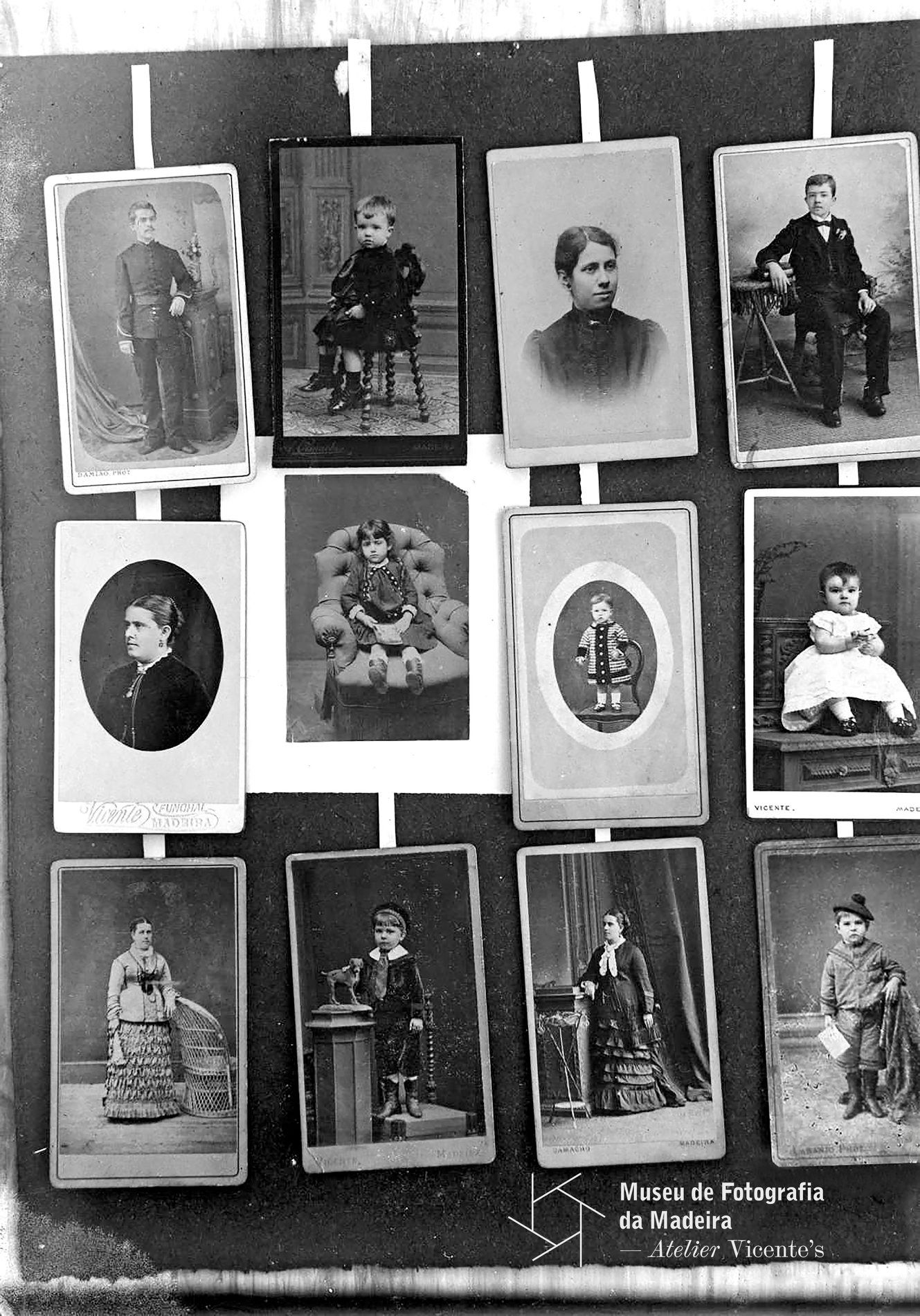In 1854, a French photographer named André Disdéri (1819-1889) patented a new type of presentation of the photographic image, based on the process of wet collodion, called “Carte de Visite” (Business card), which came to revolutionize the image industry of the time and thus popularize the photographic portrait. It consisted of a photo printed on thin, albuminized paper, measuring 54 mm by 89 mm, applied to a thicker card, 64 mm by 100 mm, where the photographer stamped his mark (see an example in our publication of February 24: t.ly/VY3P). Innovation was not just about its format and presentation, but the method of producing this image was also ingenious. Disdéri created a camera where he attached four similar lenses, which allowed him to capture an equal number of images on a single glass negative. You could register several portraits simultaneously, opening all the lenses at once, or a sequence of images in different position, if you discovered one lens at a time. When developed, the images could be separated and pasted on the cards mentioned above. This was followed by the addition of more lenses (6, 8 and 12), which not only provided a better use of the glass negative, but also reduced the time required to obtain several copies of the same image (exemplary in our publication of 15 January: t.ly/lPr6). At the time, the process of revealing the negative was complex and time-consuming, and its positivization also involved some expenditure of time, as it resorted to sun exposure.
The Carte de visite thus responded to the need for portraits that could be captured and reproduced quickly and easily. As the name implies, its dimension derives from the visit cards (or business cards) used by the bourgeoisie and noblemen, in their social or commercial interactions, which Disdéri thought to enhance with the addition of the image of the person who presents himself. Despite the reduction in the usual size of the photograph, and consequently lower marketing costs, being more attractive to customers of the lower middle class, the order in 1859, of several copies for advertising purposes, by the emperor Napoleon III (1808- 1873), popularized the new format. The following year, in England, the American photographer John Mayhall (1813-1901) made a series of portraits of Queen Victoria (1819-1901), of Prince Albert and his offspring, which he reproduced in the “carte de visite” format and which became very popular in the British court, hundreds of thousands of copies being sold. The standardized size of the carte de visite, and its easy reproduction, provided the fashions of its collection, being archived in albums created for this purpose, and many people added to his album, not only his portraits and those of his family, but also those of other illustrious personalities of his time. They were also susceptible to postal delivery, since their dimensions were adequate for the common letter envelope, which helped to popularize this format, which was the best seller throughout the sixties of the eighties. This type of representation gave the subject a certain social status, and obeyed a very peculiar aesthetic, from its frameworks (full body, half-body or bust), to the firm poses supported by different furniture and to the elaborate scenarios, which referred to the image of the illustrious figures who posed in front of the cameras of the most famous photographers of the time. Some photographic studios even provided their customers with adjustable clothes that allowed them to assume a more dignified pose and greater status.
In the early 1870s, this format was superseded by the “carte cabinet” (album card), whose presentation was in everything similar, but on a larger card, measuring 110 mm by 170 mm. This new configuration remained popular until the beginning of the 20th century, when the taste changed, and when technological innovation, implemented by Kodak, focuses on the interest in instant photography.
In the image that illustrates this text, there are several visit cards produced by several photographic houses (among them Photographia Vicente and João Camacho) that depict Alberto Camacho Brandão (1884 - 1945), military and amateur photographer from Azores, and his family. The photograph of this set was taken by Brandão himself.
Credits: Museu de Fotografia da Madeira - Atelier Vicente's.

ALBERTO CAMACHO BRANDÃO | Conjunto de 12 cartes de visite de Alberto Camacho Brandão e de seus familiares
17,8 x 13 cm | Negativo simples, vidro | Gelatina e sais de prata
MFM-AV, Inv. ALB/16

